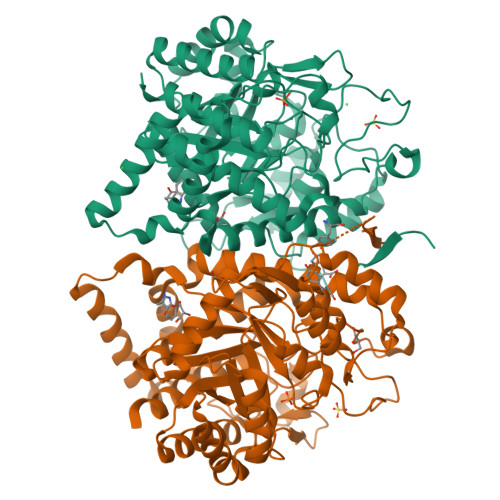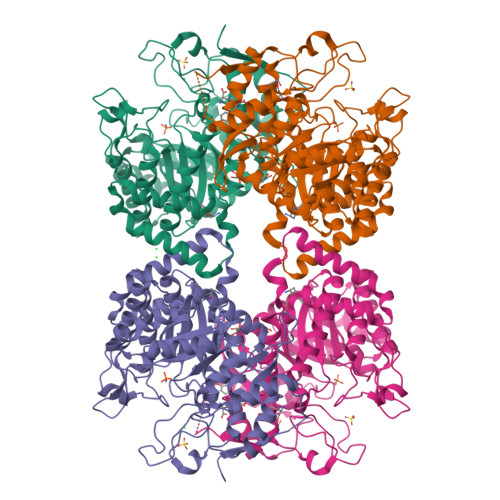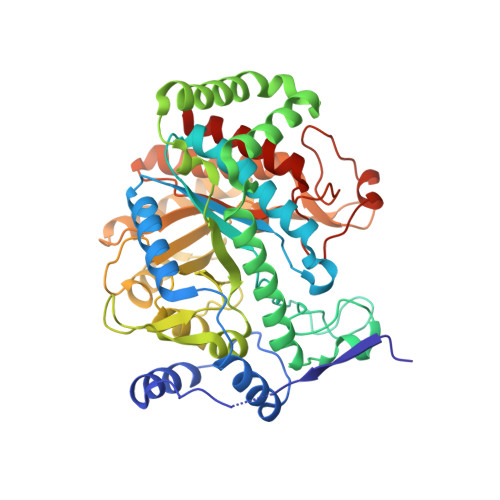Three Sites and You are Out: Ternary Synergistic Allostery Controls Aromatic Aminoacid Biosynthesis in Mycobacterium Tuberculosis.
Blackmore, N.J., Reichau, S., Jiao, W., Hutton, R.D., Baker, E.N., Jameson, G.B., Parker, E.J.(2013) J Mol Biology 425: 1582
- PubMed: 23274137
- DOI: https://doi.org/10.1016/j.jmb.2012.12.019
- Primary Citation of Related Structures:
2YPO, 2YPP, 2YPQ - PubMed Abstract:
3-Deoxy-d-arabino-heptulosonate 7-phosphate synthase (DAH7PS) catalyzes the first step in the shikimate pathway, the pathway responsible for the biosynthesis of the aromatic amino acids Trp, Phe, and Tyr. Unlike many other organisms that produce up to three isozymes, each feedback-regulated by one of the aromatic amino acid pathway end products, Mycobacterium tuberculosis expresses a single DAH7PS enzyme that can be controlled by combinations of aromatic amino acids. This study shows that the synergistic inhibition of this enzyme by a combination of Trp and Phe can be significantly augmented by the addition of Tyr. We used X-ray crystallography, mutagenesis, and isothermal titration calorimetry studies to show that DAH7PS from M. tuberculosis possesses a Tyr-selective site in addition to the Trp and Phe sites, revealing an unusual and highly sophisticated network of three synergistic allosteric sites on one enzyme. This ternary inhibitory response, by a combination of all three aromatic amino acids, allows a tunable response of the protein to changing metabolic demands.
Organizational Affiliation:
Biomolecular Interaction Centre, Department of Chemistry, University of Canterbury, Private Bag 4800, Christchurch 8140, New Zealand.























